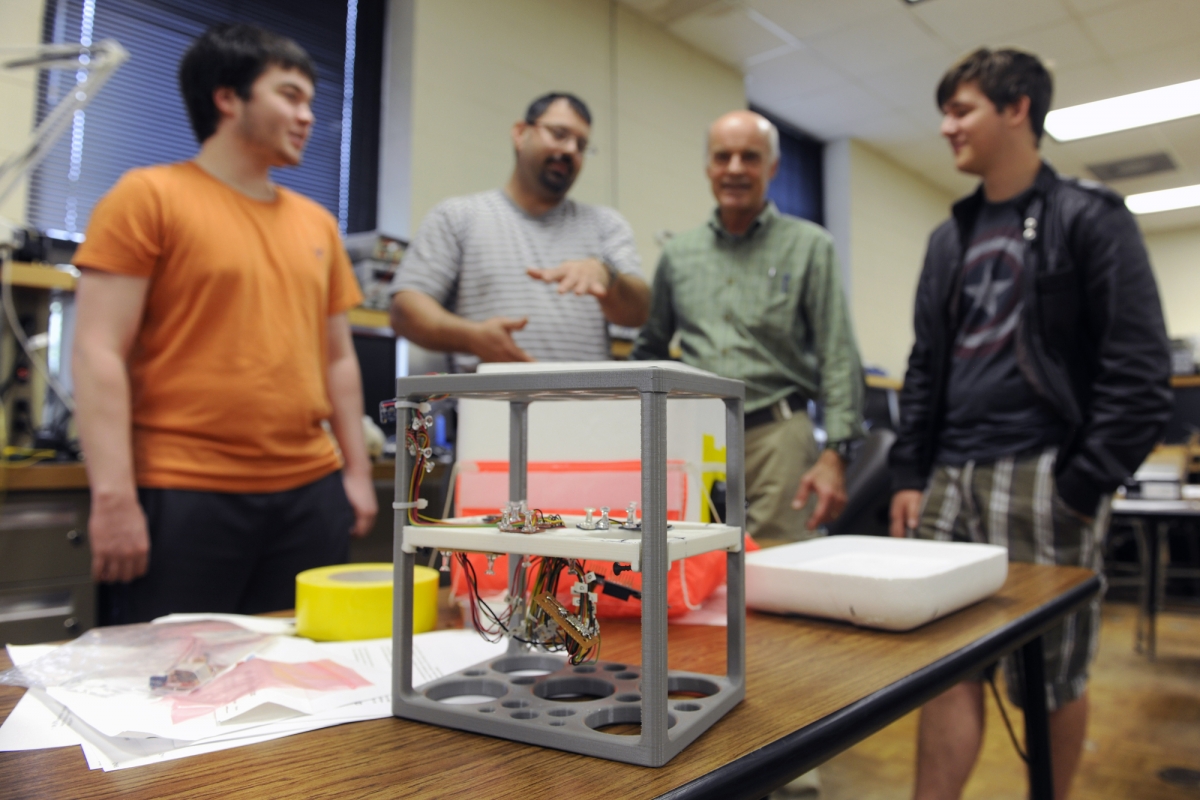 |
| SCC mathematics instructor Vance Waggener (third from left) discusses the payload (foreground) for a NASA high-altitude balloon project with students, from left: William Tanaka of Cullowhee, Jesse Moore of Franklin and Garrett Swartzentruber of Sylva at the Jackson Campus. |
For a few anxious seconds on April 9 in Hickory, Southwestern Community College students clung to a large white weather balloon and the cargo box on which they’d been working for months.
In an instant, each student stepped back – and the balloon rocketed toward the stratosphere.
Mathematics instructor Vance Waggener and his students wound up chasing the high-altitude craft and its payload of cameras and measurement instruments to their eventual landing site in Erwin, nearly 200 miles to the east.
That’s when the stress level of this project, which was funded by a NASA-sponsored grant through N.C. State University, spiked even higher.
“From recovery until we got to see the results from the on-board cameras, I was only feeling anxiety,” said Jesse Moore, a first-year student who played a key role in every aspect of the project. “We had put in a lot of hard work, sleepless nights, care, test and re-do on this. I wanted to know if everything worked like it should. I wanted to see what it looked like from up there.”
Along with classmates Chris Beasley, James Howe, Garrett Swartzentruber of Sylva, William Tanaka of Cullowhee and Braden Tholkes of Cullowhee, Moore was not disappointed.
At its highest point, the balloon had reached an altitude of more than 90,000 feet. Cameras and instruments captured all the critical moments as the aircraft soared high above the clouds, viewed our planet’s curvature and peered into the blackness of outer space before successfully deploying a parachute and drifting safely back to earth.
SCC was among 10 statewide community colleges to send up a balloon as part of the project, and Southwestern’s team was recognized for capturing the best video and best photograph.
“It was awesome for me getting to work with my teammates on this weather balloon, to build it by hand and send it to near-orbital space,” Moore said. “Anyone could use Google to find out what that looks like. But to know that something I helped put together took these images is truly special. When I first looked at the pictures and video, they were just mind-blowing. Phenomenal.
“This was a total game-changer,” Moore added. “It not only impacted me. I’ve got five kids, four of whom are in elementary and pre-school. They were impressed too. They watched the launch, and my son already said he wants to be an engineer. … It inspired me enough that I’m considering a career in NASA. Who really thinks they’ll be working for NASA one day? This is big because doors are opening.”
Watching Moore and the other students grow and succeed through the project was particularly rewarding for their instructor.
“This has been an incredible adventure for me as a former engineer and a present math instructor,” Waggener said. “This project will be the key to many chances for internships, scholarships, grants, education and jobs in the future if they will only pursue those openings. Until we started work on this project, I had no idea how much support and encouragement was available through the NASA N.C. Space Grant organization. This grant - along with hard working, high-energy students - is a great combination.”
The high-altitude balloon effort was the first in a series of NASA-funded projects in which SCC will be involved over the next few years.
Last fall, Southwestern and its partners secured a $1.4 million grant from NASA to raise the awareness of STEM (Science, Technology, Engineering, Mathematics) education throughout the region and to increase the academic performance of students from kindergarten through college.
One aspect of that project is a public viewing and literacy event for the 2017 total solar eclipse in the Great Smoky Mountains National Park – one of the prime locations for observing the rare phenomenon.
Balloon team members Howe and Moore have been selected to accompany Matt Cass, SCC science department chair and principal investigator on the NASA project, on a July trip to Bozeman, Mont. They’ll train with hundreds of scientists and students as part of a National Space Grant effort to launch dozens of high-altitute balloons during the 2017 solar eclipse.
Howe and Moore will also provide leadership for SCC’s 2016-17 balloon team.
For more information about SCC and its programs, visit www.southwesterncc.edu, drop by your nearest SCC location or call 828.339.4000.
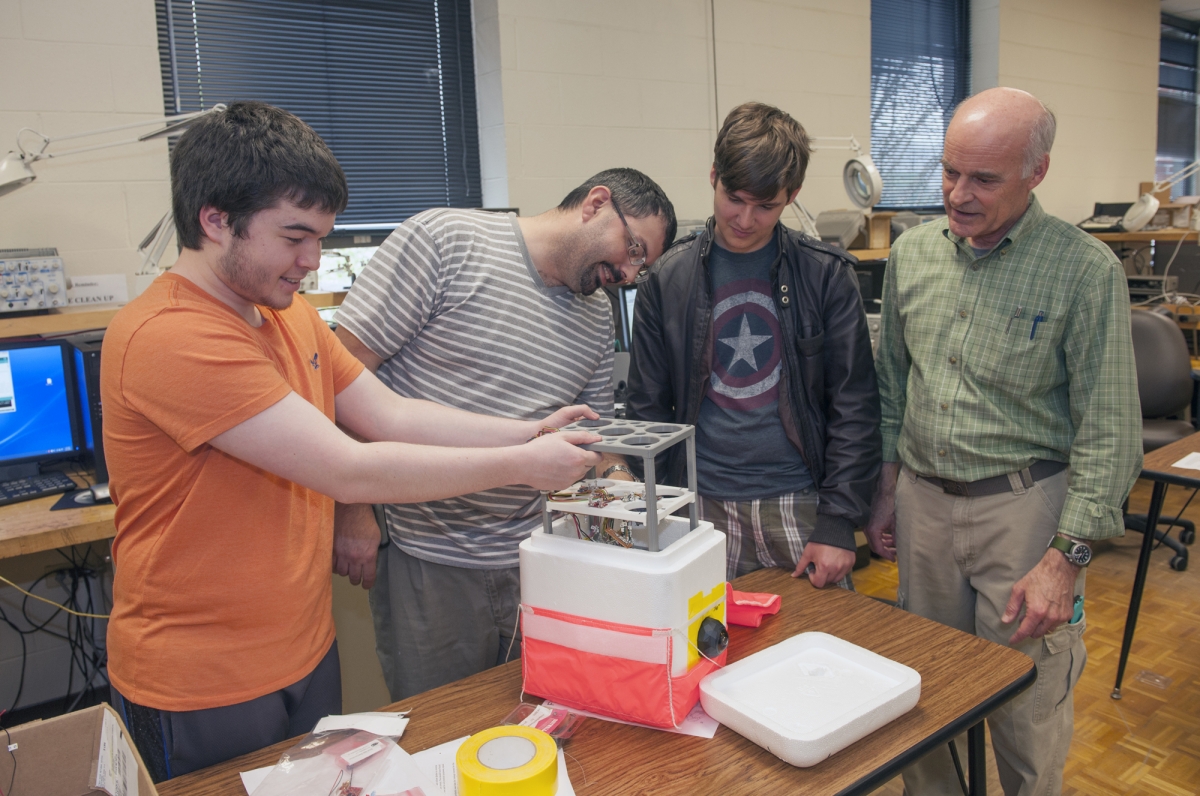 |
| SCC mathematics instructor Vance Waggener (right) works on the payload for a NASA high-altitude balloon project with students, from left: William Tanaka of Cullowhee, Jesse Moore of Franklin and Garrett Swartzentruber of Sylva at the Jackson Campus. |
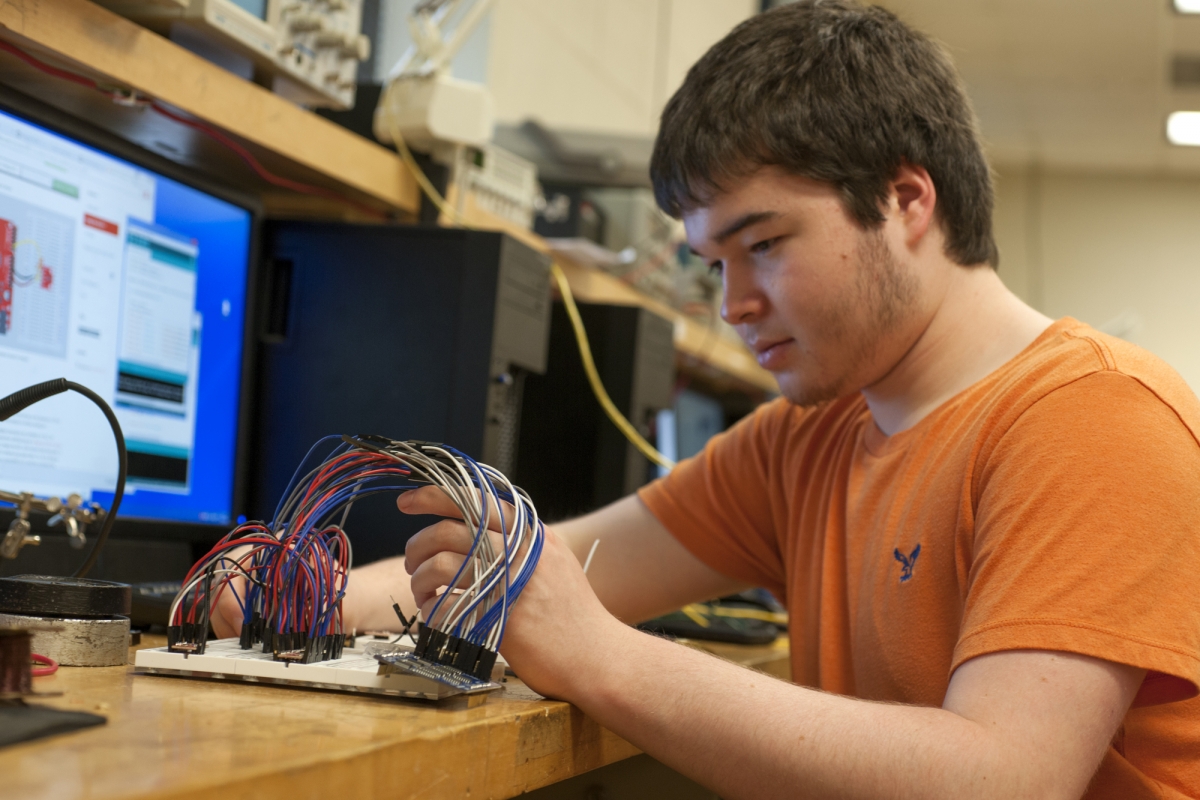 |
| William Tanaka of Cullowhee works on the wiring of a measurement instrument used in the NASA high-altitude balloon project, which was launched this spring in Hickory. |
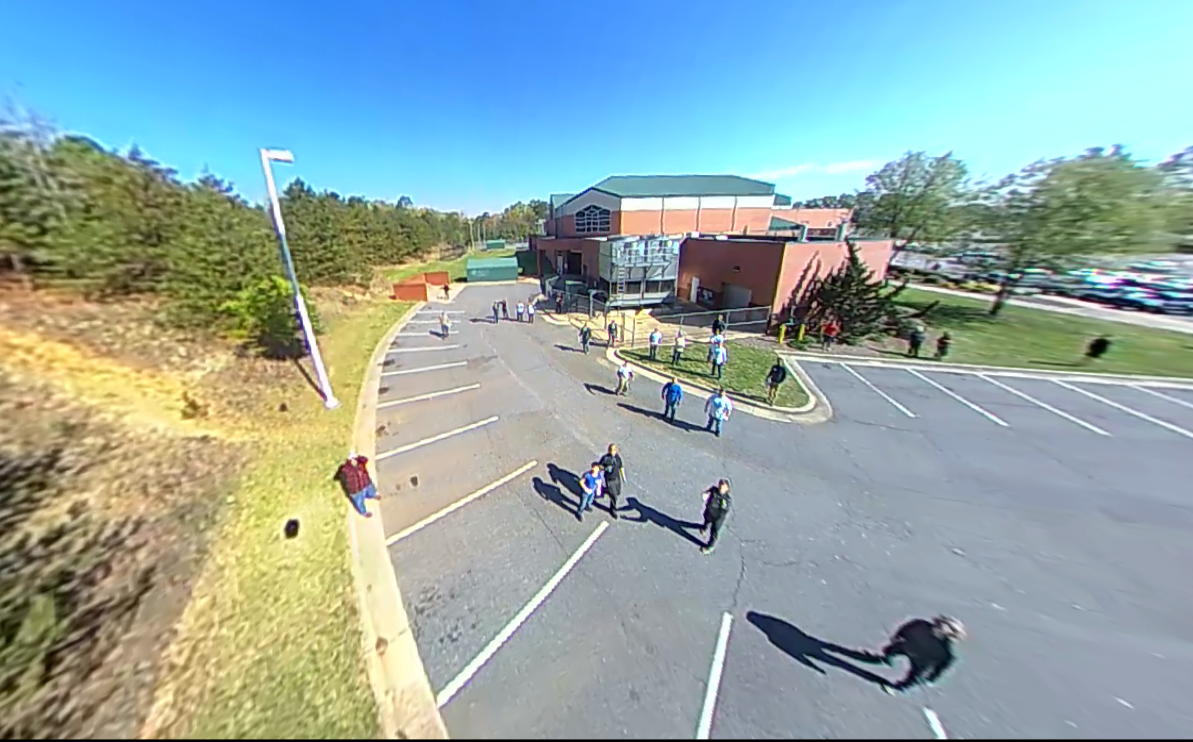 |
| This image, captured by an on-board camera, shows SCC students seconds after they released their high-altitude balloon this spring in Hickory. |
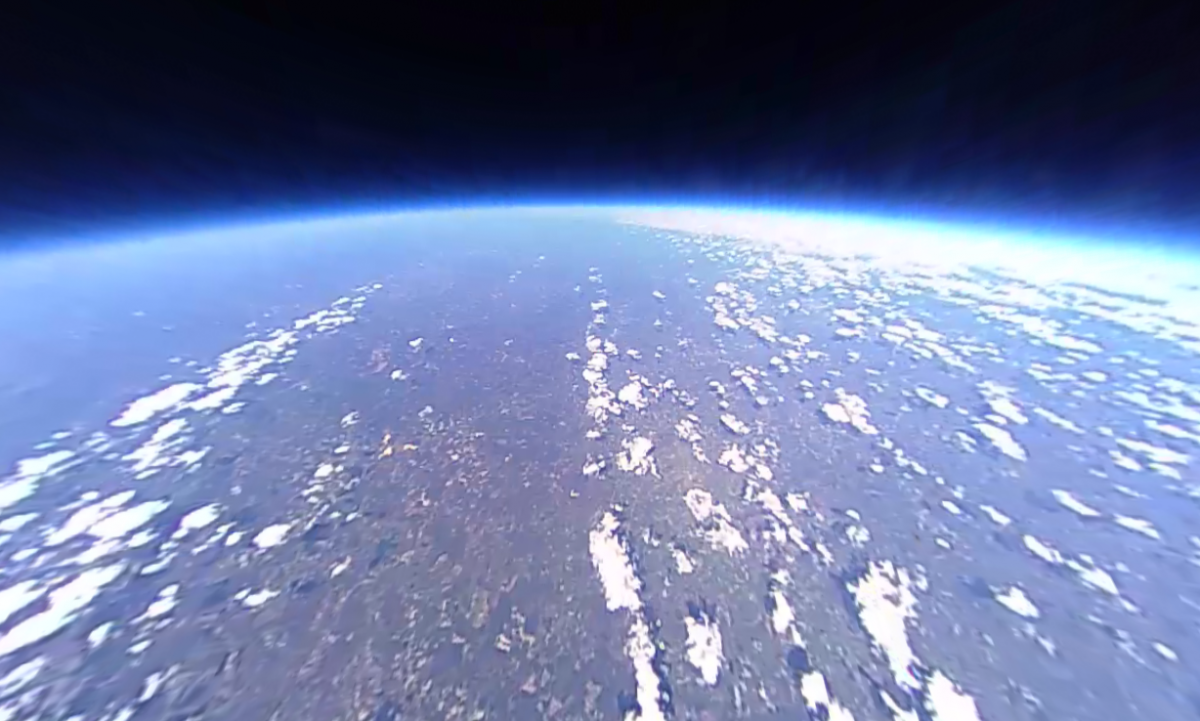 |
| Earth as seen by a camera inside a high-altitude balloon’s payload, which was assembled and launched by SCC students this spring. Part of a NASA-sponsored grant through N.C. State University, SCC’s balloon was launched April 9 in Hickory. |

